These 25 Houseplants Are Built To Thrive In Dark And Humid Bathrooms

Reviewed By PETER LICKORISH

Peter is a Horticulture Lecturer and self-employed Horticulturist, with a passion for diverse areas of the industry - from garden design to the science behind plant growth and propagation. He has completed the Royal Horticultural Society’s Master of Horticulture (MHort) Award and lectures on RHS courses at Bedford College.
IN THIS GUIDE
- 1) Air Plant
- 2) Asparagus Fern
- 3) Aspidistra
- 4) Azalea
- 5) Begonia
- 6) Bird’s Nest Fern
- 7) Bromeliad
- 8) Chinese Evergreen
- 9) Croton
- 10) Dendrobium Orchid
- 11) Dragon Tree
- 12) Devil’s Ivy
- 13) Lucky Bamboo
- 14) Maidenhair Fern
- 15) Majesty Palm
- 16) Marble Queen Pothos
- 17) Monstera
- 18) Peace Lily
- 19) Philodendron
- 20) Purple Shamrock
- 21) Fiddle-Leaf Fig
- 22) Snake Plant
- 23) Spider Plant
- 24) String Of Turtles
- 25) ZZ Plant
- References
A well-chosen house plant can be the perfect way to add some energy, intrigue and character to a bathroom.
Not only are they great at brightening up the place, but they are also an excellent method of removing airborne contaminants from such an enclosed environment, to boot.
While the heat and humidity of the bathroom isn’t ideal for all plants, there are certain species which will positively flourish in those conditions.
Nonetheless, you should still watch out for signs of root rot or powdery mildew, which are common afflictions in near-constant moisture.1Saalau, E. (2014, February 14). Root Rots of Houseplants. Horticulture and Home Pest News. Retrieved May 2, 2023, from https://hortnews.extension.iastate.edu/2014/02-14/rootrot.html
“Managing and coping with humidity is the key for happy bathroom plants,” says Peter Lickorish, a Lecturer in Horticulture.
“If the humidity is too low, leaves will often show crisping and wilting, whereas humidity that is too high tends to cause fungal problems and rot.
“Fungus gnats may also become a problem, for which there are sticky traps and nematodes.”
At the same time, light is a basic requirement for almost all flora, but certain cultivars are better adapted to deal with a dearth of it than others.
Indeed, fluorescent lighting can even supplement the needs of some plant types.
With that in mind, here are 25 species best suited to the dark and humid environs of a bathroom.
1) Air Plant
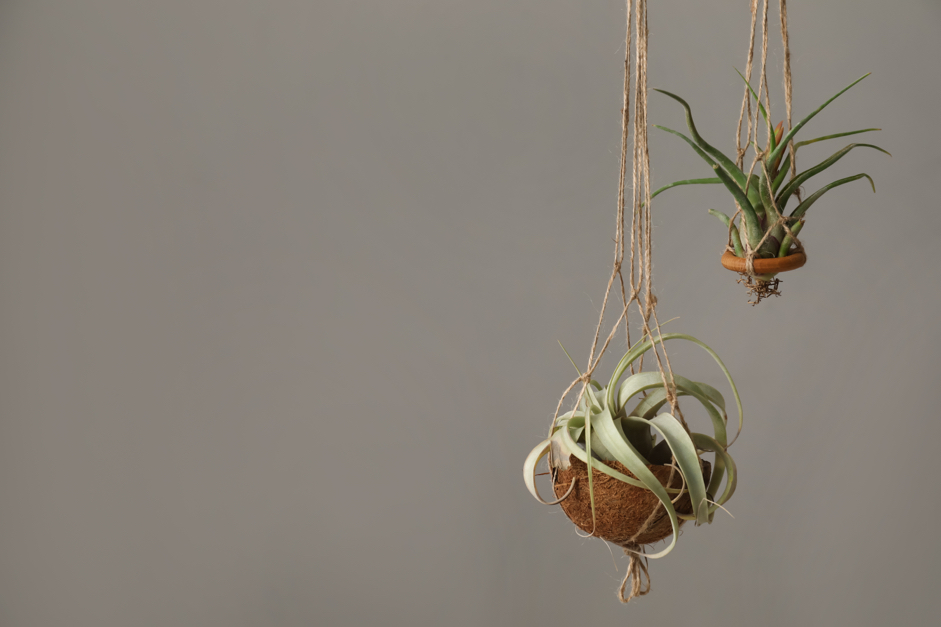
- BOTANICAL NAME: Tillandsia spp.
- COMMON NAME(S): Air Plant
- HARDINESS RATING: H1C
- FLOWERING SEASON(S): Spring / Autumn
- SUNLIGHT: Bright, diffused light
- WATERING: 1-2 times per week
Air plants dispense with soil altogether, so all you need is a frame or wire to attach them to.
Positioning them in a bathroom will mean that they’ll usually absorb all the moisture they need from the ambient conditions, as misting on the leaves is sufficient.
That means that the only thing you’ll have to supply them with is sunlight, so placing your air plant on the sill of a frosted glass window should suffice.
Failing that, the fluorescence given off by artificial lighting should be enough of a replacement to keep these hardy little creatures alive and kicking.
2) Asparagus Fern

- BOTANICAL NAME: Asparagus setaceus
- COMMON NAME(S): Asparagus Fern
- HARDINESS RATING: H1C
- FLOWERING SEASON(S): Summer
- SUNLIGHT: Indirect light
- WATERING: 1-2 times per week
The sinewy fronds of this attractive fern are the perfect accompaniment to a bathroom environment, especially since it thrives upon a steady supply of humidity.
It’s another one that prefers at least some sunlight, so a windowsill location is ideal.
Although it looks fuzzy enough to stroke, you should be mindful that it carries barbed thorns on its stems, so keep out of the reach of visitors.
3) Aspidistra

- BOTANICAL NAME: Aspidistra
- COMMON NAME(S): Cast-Iron Plant / Bar Room Plant
- HARDINESS RATING: H3
- FLOWERING SEASON(S): Summer
- SUNLIGHT: Indirect light
- WATERING: Once per fortnight
Aspidistras are also known as cast iron plants, which should give you some idea of their virtually indestructible nature.
It’s one of the few varieties of houseplants which isn’t fussy about much light at all, making it a great choice for a guest bathroom that receives lower footfall.
It can also take or leave humidity levels, adding another plus point to its attractiveness in less-frequented locales.
4) Azalea
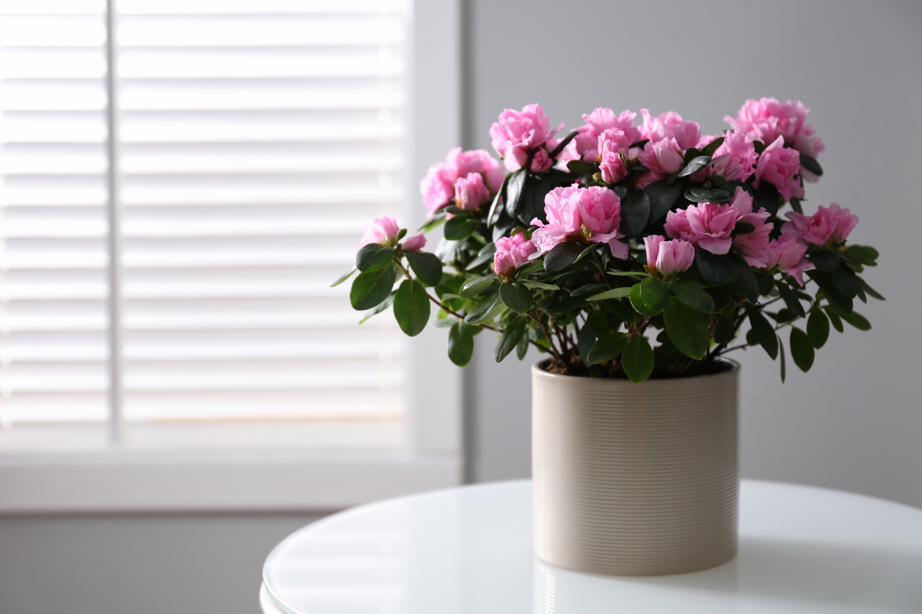
- BOTANICAL NAME: Rhododendron simsii
- COMMON NAME(S): Indoor Azalea
- HARDINESS RATING: H4
- FLOWERING SEASON(S): Winter
- SUNLIGHT: Bright, indirect light
- WATERING: Twice per week
Blessed with vibrant blooms in all shades, from brilliant white through luscious pink and into deep scarlet, azaleas can provide a colourful contrast to the pristine and sometimes impersonal décor of a bathroom.
They absorb water through their foliage, meaning they’ll thrive in a bathroom environment and your watering assistance will only be needed when the soil fully dries out.
They do require a modicum of sunlight, however.
“Moving from warmer rooms to cooler bathrooms in late autumn can help specimens that are less keen to flower,” shares Peter.
5) Begonia

- BOTANICAL NAME: Begonia
- COMMON NAME(S): Begonias
- HARDINESS RATING: H1B
- FLOWERING SEASON(S): Winter
- SUNLIGHT: Bright, indirect light
- WATERING: 1-2 times per week
Because they absolutely adore heat and humidity, begonias and bathrooms are a match made in alliterative heaven.
They’ll do best on a bathroom shelf, while opting for a species which is prized for its foliage rather than its flowers (such as rex begonia) is the best way to ensure they cope with limited light levels.
Their absorption of ambient moisture should be sufficient in regularly-used bathrooms but don’t be afraid to water the roots gently if they’re looking thirsty.
6) Bird’s Nest Fern

- BOTANICAL NAME: Asplenium nidus
- COMMON NAME(S): Bird’s Nest Fern
- HARDINESS RATING: H1B
- SUNLIGHT: medium to bright, indirect light
- WATERING: Every 1-2 weeks
Another fern, the bird’s nest boasts bright green foliage and wavy, waxy leaves in large dimensions.
As such, it can impart a tropical aesthetic to your bathroom and will respond positively to the ambient moisture after a shower or bath.
It does prefer sunlight, but it’ll survive just fine in lower-light conditions.
7) Bromeliad
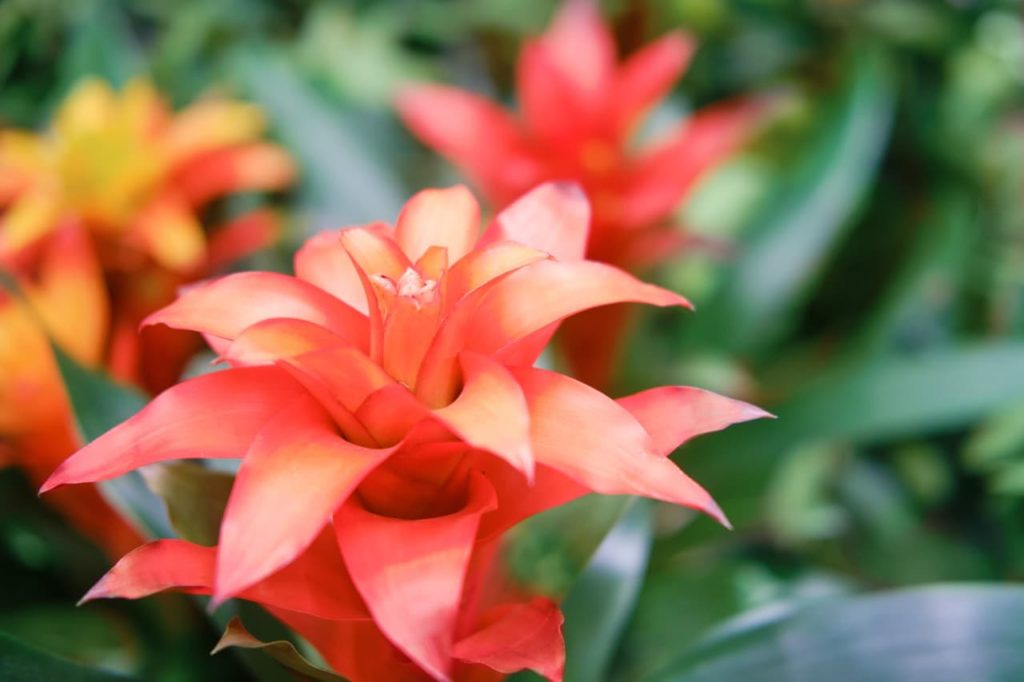
- BOTANICAL NAME: Vriesia spp., Ananas spp., Aechmea spp.
- COMMON NAME(S): Bromeliad
- HARDINESS RATING: H1B
- FLOWERING SEASON(S): Summer
- SUNLIGHT: Medium to bright, indirect light
- WATERING: Once per week
Famous for thriving in situations where most other plants would falter, bromeliads produce long-lasting blooms in a variety of soft colours during the winter months.
Many of the genera are epiphytic, meaning they absorb water through the air rather than through their roots, which is why they’re such a strong choice in the bathroom.2S. (n.d.-c). Bromeliads. Wisconsin Horticulture. Retrieved March 13, 2023, from https://hort.extension.wisc.edu/articles/bromeliads/
However, they do require good ventilation, so leave the extractor fan running after use.
8) Chinese Evergreen

- BOTANICAL NAME: Aglaonema
- COMMON NAME(S): Chinese Evergreen
- HARDINESS RATING: H1B
- SUNLIGHT: Low to bright, indirect light
- WATERING: Every 1-2 weeks
Humid or dry, bright or dim, the Chinese evergreen is extremely unfussy about the surroundings it’s grown in.
Indeed, it’s one of the most adaptable and resilient species out there, so a hot, dark and stuffy location like a bathroom poses no problem for it whatsoever.
There are around 20 different cultivars to choose from in the genus and each of them will bring some tropical charm to your bathroom space.
9) Croton
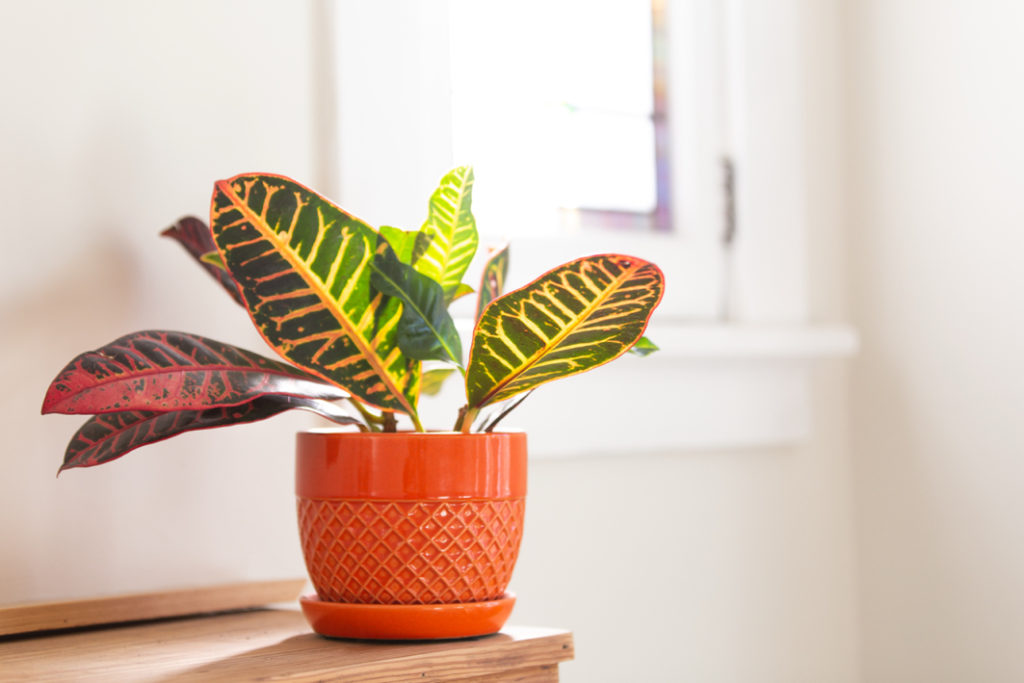
- BOTANICAL NAME: Codiaeum variegatum
- COMMON NAME(S): Croton
- HARDINESS RATING: H1B
- FLOWERING SEASON(S): Summer
- SUNLIGHT: Bright, indirect light
- WATERING: Once per week
Crotons are big fans of both excessive moisture and humidity levels, so it’s no wonder they’re often placed in bathrooms in the UK.
There are a multitude of broad-leaved varieties to choose from, some of which come in speckled or mottled patterns.
However, they do require as much indirect light as you’re able to give them, so near a window is best, while some species can outgrow a human adult in height, so make sure you have the requisite space available.
10) Dendrobium Orchid
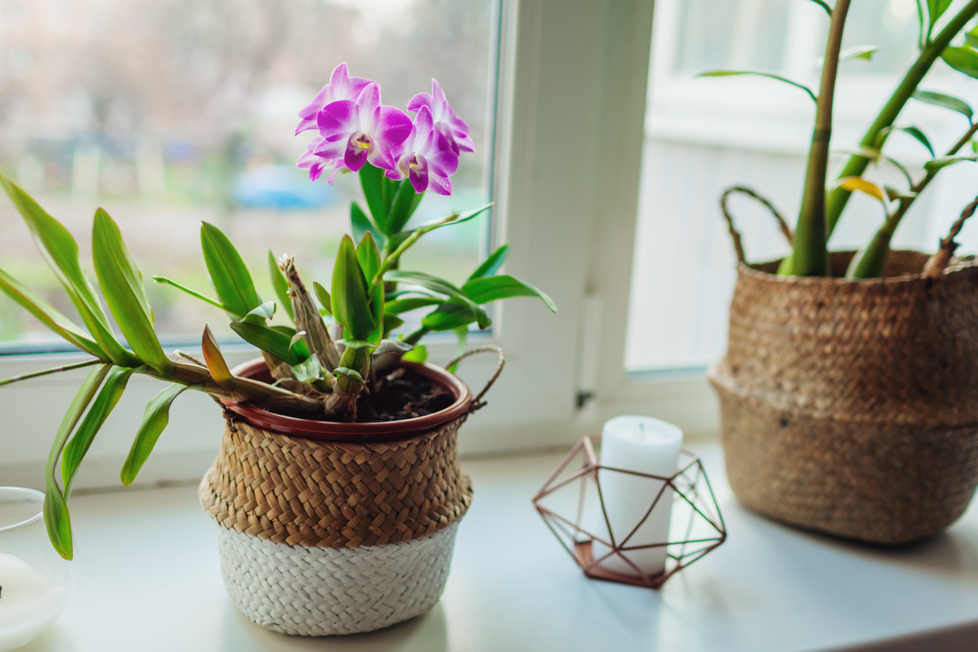
- BOTANICAL NAME: Dendrobium
- COMMON NAME(S): Orchid
- HARDINESS RATING: H1C
- FLOWERING SEASON(S): Winter / Spring
- SUNLIGHT: Bright, indirect light
- WATERING: Every 1-2 weeks
Almost any orchid from the 1,500-strong genus will do well in the steamy confines of a bathroom since they invariably prefer a damp environment.
However, some of them are less tolerant of dimly lit locations than others, which is why we recommend the dendrobium orchid for those bathrooms which don’t enjoy a south-facing window.
“If you have a window, the sill will still be its happiest place,” shares Peter.
The pretty blossoms it produces are a delightful addition to any home.
11) Dragon Tree
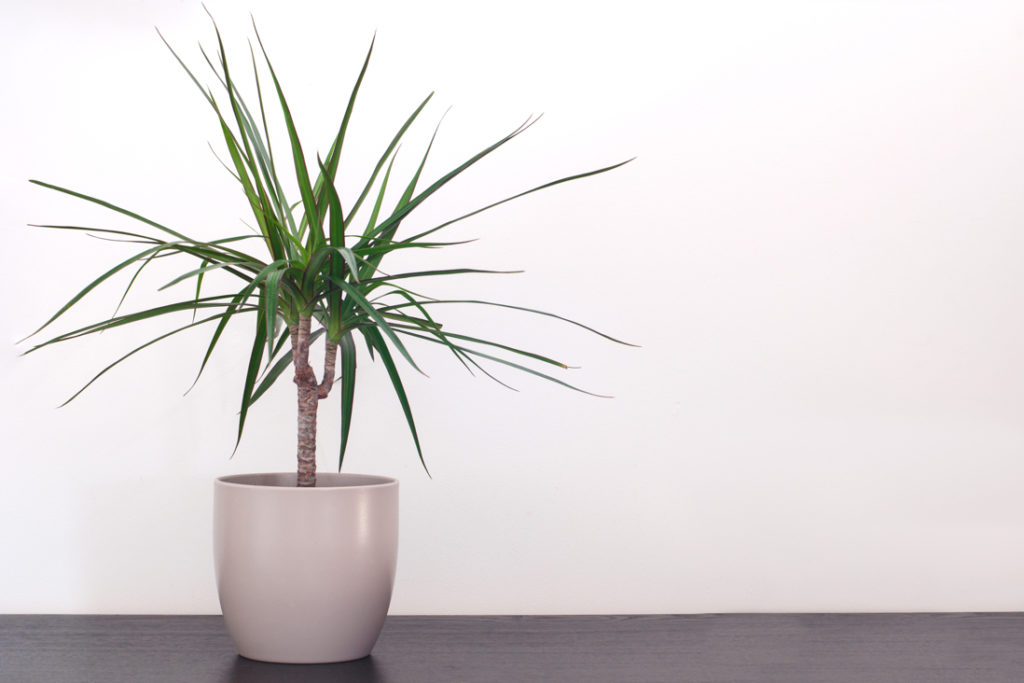
- BOTANICAL NAME: Dracaena draco
- COMMON NAME(S): Dragon Tree
- HARDINESS RATING: H1C
- FLOWERING SEASON(S): Summer
- SUNLIGHT: Bright, indirect light
- WATERING: Once per week
If you have the space to accommodate a tree in your bathroom, the dragon tree is an exceptional choice.
That’s because they thrive in humid conditions and don’t mind too much if they’re deprived of sunlight, making them ideal for the steamy and sultry bathroom environment.
They’re capable of growing over six metres tall in the wild, but rest assured that potted varieties will never reach such lofty heights.3Dracaena draco | dragon tree. (n.d.). Royal Horticultural Society. Retrieved March 13, 2023, from https://www.rhs.org.uk/plants/6092/i-dracaena-draco-i/details
12) Devil’s Ivy

- BOTANICAL NAME: Epipremnum aureum
- COMMON NAME(S): Devil’s Ivy / Golden Pothos
- HARDINESS RATING: H1B
- FLOWERING SEASON(S): Summer
- SUNLIGHT: Medium, indirect light
- WATERING: Once per week
Also known as Golden Pothos, this attractive trailing plant looks best when displayed in a hanging basket at altitude in your bathroom.
Its tolerance of low light and high humidity levels means it’s an excellent option in that room of the house, while it will let you know if it’s not receiving enough moisture through browning of its leaves.
13) Lucky Bamboo
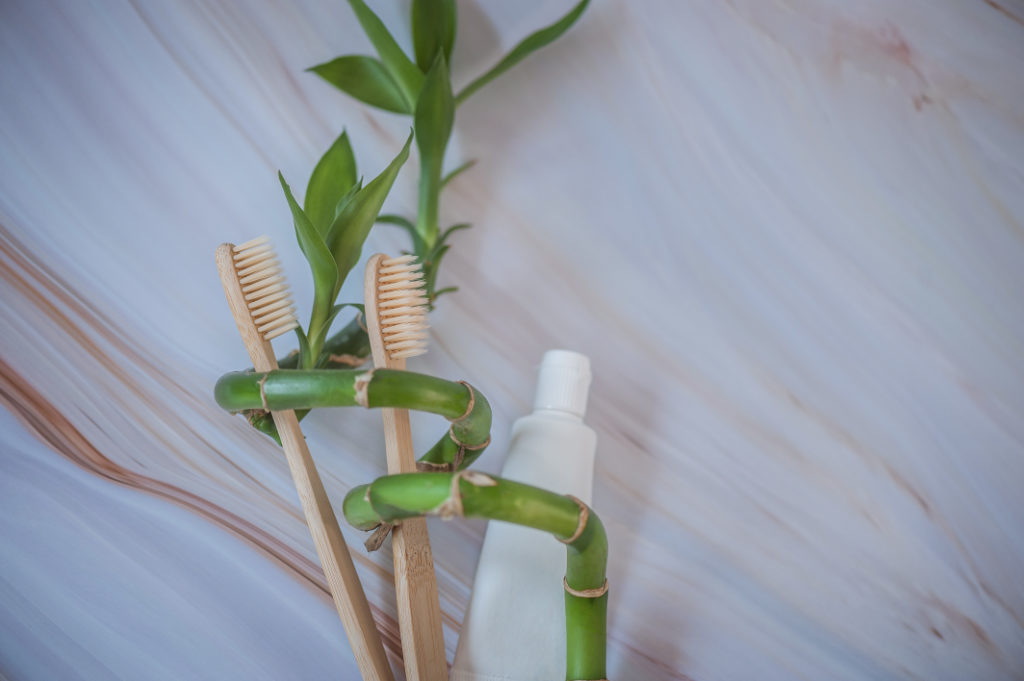
- BOTANICAL NAME: Dracaena sanderiana
- COMMON NAME(S): Lucky Bamboo
- HARDINESS RATING: H1B
- SUNLIGHT: Indirect light
- WATERING: Once per week
This bamboo is highly versatile – not only does it not require bright sunlight, it doesn’t even need soil!
Instead, plant it in a container filled with water and pebbles, changing the former every few weeks, and you’ll be rewarded with a supremely attractive specimen that will bring major spa vibes to your bathroom.
It can even be shaped into the structure of your choosing!
14) Maidenhair Fern
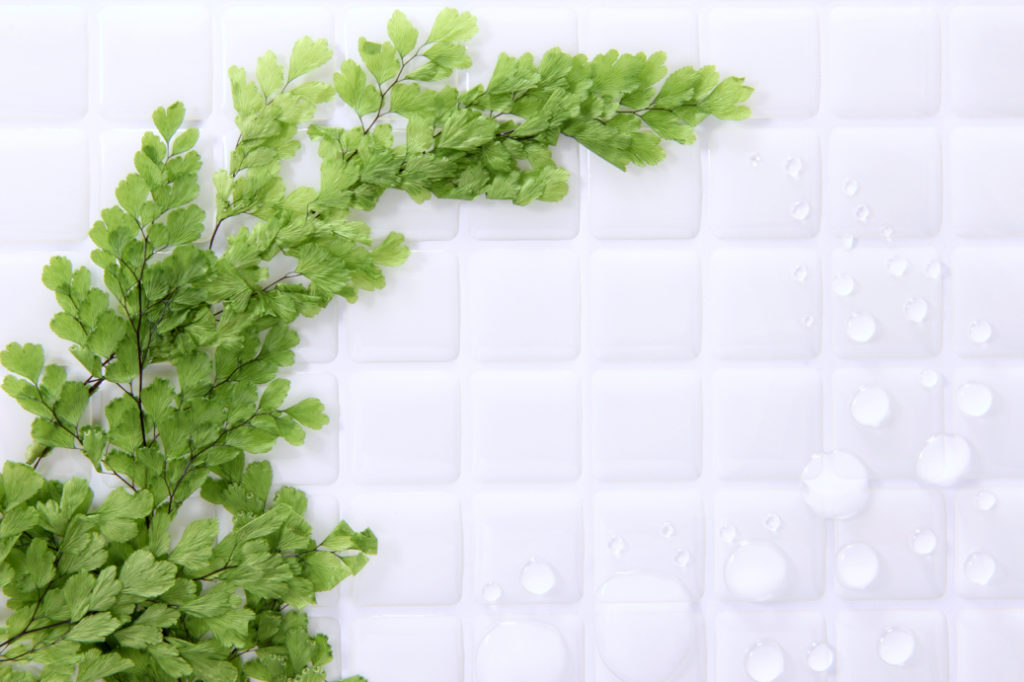
- BOTANICAL NAME: Adiantum
- COMMON NAME(S): Maidenhair Fern
- HARDINESS RATING: H1C
- SUNLIGHT: Bright, indirect light
- WATERING: Every other day
In the wild, maidenhair ferns are often found where other plants fear to tread, such as the fissures between rocks.
That’s because they’re capable of soaking up all moisture within their vicinity and they absolutely love a humid environment, so the bathroom is the best place for them.
They boast smaller, daintier leaves than some of their counterparts and have a slow-growing habit, meaning it could take years before they reach full maturity.
15) Majesty Palm
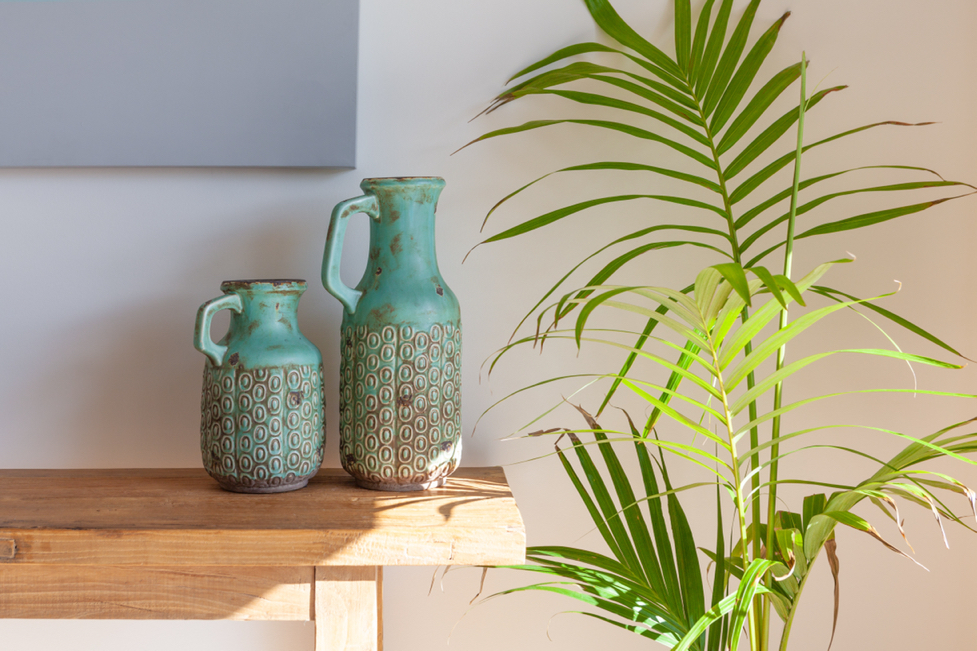
- BOTANICAL NAME: Ravenea rivularis
- COMMON NAME(S): Majesty Palm
- HARDINESS RATING: H1A
- SUNLIGHT: Bright, indirect light
- WATERING: Every 1-2 weeks
One of the larger options on this list, majesty palms can reach up to 3m in an indoor environment and almost ten times that in their natural habitat.
As such, it’s important you ensure you have the dimensions to cater for this tree.
Having said that, those who meet its modest needs (consistent moisture, high humidity levels and as much sunlight as you can give it) will be rewarded with a breath-taking addition to their bathroom.
16) Marble Queen Pothos
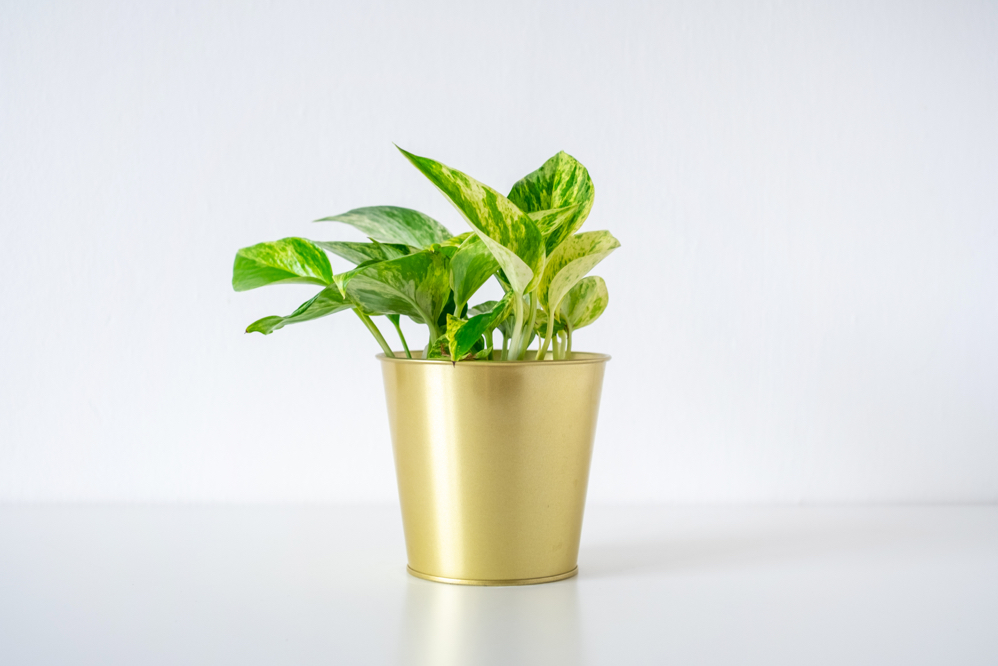
- BOTANICAL NAME: Epipremnum pinnatum ‘Marble Queen’
- COMMON NAME(S): Marble Queen Pothos / Cubicle Plant
- HARDINESS RATING: H1B
- SUNLIGHT: Medium to bright indirect light
- WATERING: Once per week
Sometimes referred to as the ‘cubicle plant’ because of its ability to withstand inhospitable environments, the marble queen pothos will feel right at home in your bathroom.
It’s capable of surviving in low-light conditions and although humidity isn’t a prerequisite to achieving its full potential, it certainly won’t hinder its growth.
Its trailing habit makes it ideal for hanging from your shower rail.
17) Monstera

- BOTANICAL NAME: Monstera deliciosa
- COMMON NAME(S): Monstera / Swiss Cheese Plant
- HARDINESS RATING: H1B
- FLOWERING SEASON(S): Spring / Summer
- SUNLIGHT: Bright, indirect light
- WATERING: Every 1-2 weeks
Monsteras are one of the most common house plants across the UK, largely due to their attractive and instantly recognisable foliage and their hardy temperament.
They’re completely unfazed by any sort of humidity and while they will do better when given plenty of sunshine, they’ll cope just fine in its absence.
Their versatility makes them a great choice for any room in the house, including a dark and humid bathroom.
18) Peace Lily
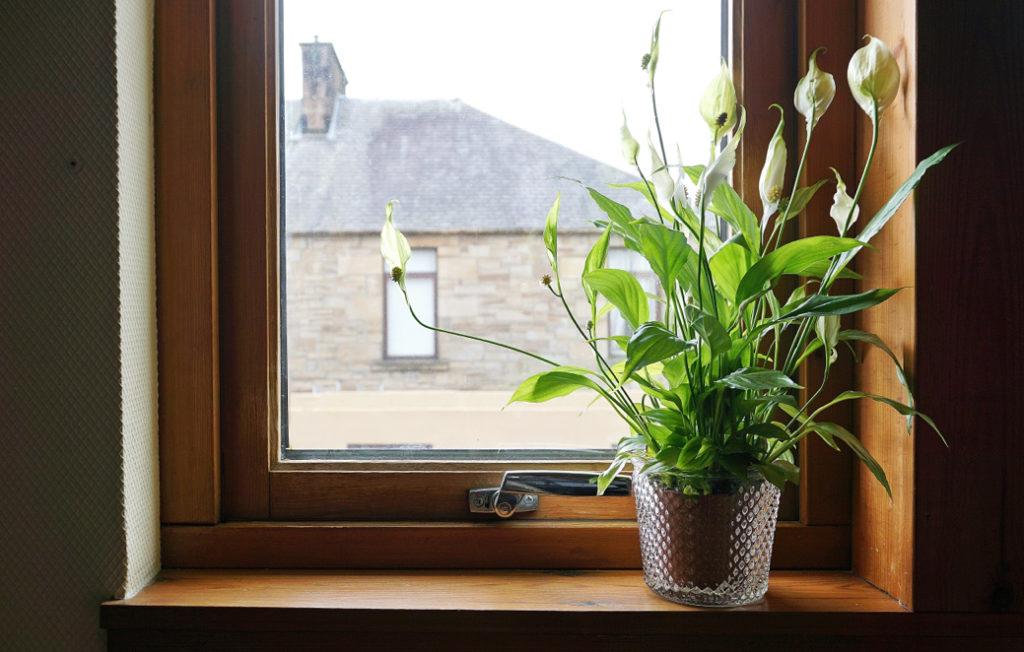
- BOTANICAL NAME: Spathiphyllum wallisii
- COMMON NAME(S): Peace Lily
- HARDINESS RATING: H1B
- FLOWERING SEASON(S): Spring / Summer
- SUNLIGHT: Low to bright indirect light
- WATERING: Once per week
Peace lilies are a perfect fit for the bathroom for several reasons.
Firstly, they have a strong preference for locations with high humidity and low light exposure, meaning a spot next to the shower is ideal.
Secondly, their iconic blossoms burst forth all year round, adding a touch of class to any room they’re placed in.
19) Philodendron
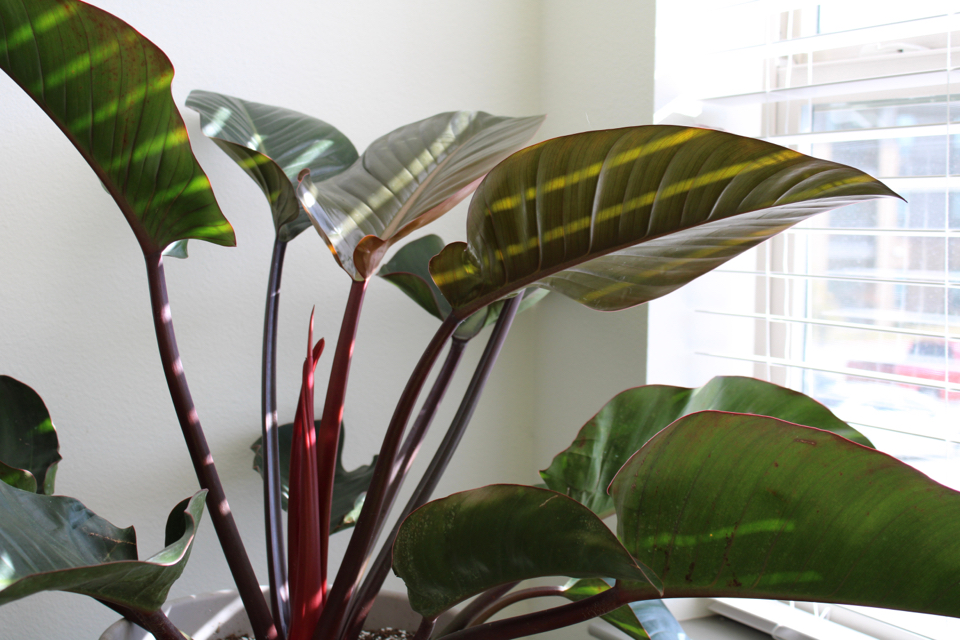
- BOTANICAL NAME: Philodendron
- COMMON NAME(S): Philodendron
- HARDINESS RATING: H2
- FLOWERING SEASON(S): Summer
- SUNLIGHT: Bright, indirect light
- WATERING: Every 1-2 weeks
Split-leafed philodendrons bear a remarkable resemblance to monsteras, prompting many people to mistakenly believe they are one and the same.
However, they’re actually very different plants which belong to different genera, though both will do well in a bathroom environment.
But whereas monstera will grow upwards, philodendron tend to grow outwards, so make sure they have enough room to spread if you place one in your privy.
20) Purple Shamrock
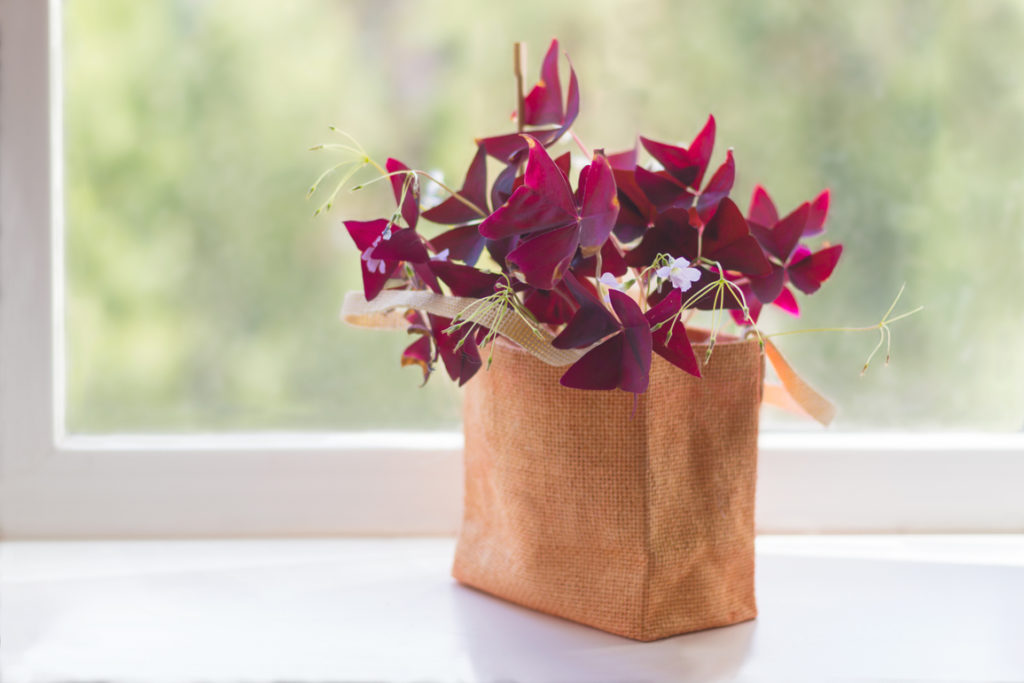
- BOTANICAL NAME: Oxalis triangularis
- COMMON NAME(S): Purple Shamrock
- HARDINESS RATING: H3
- FLOWERING SEASON(S): Summer
- SUNLIGHT: Medium to bright indirect light
- WATERING: Every 1-2 weeks
Purple shamrocks boast an abundance of triangular-shaped leaves in the deepest purple, which creates a pleasing contrast again the white tiles of a conventional bathroom.
That colour scheme is brought further to life during the summer months when the plant will sprout forth a profusion of delicate pink blossoms, while its humidity-loving habit makes it an ideal option for a steamy bathroom shelf.
21) Fiddle-Leaf Fig

- BOTANICAL NAME: Ficus lyrata
- COMMON NAME(S): Fiddle-leaf Fig
- HARDINESS RATING: H1B
- FLOWERING SEASON(S): Summer
- SUNLIGHT: Bright, direct light
- WATERING: Once per week
A native of the tropical jungles of Africa, the fiddle leaf fig is a plant which loves hot and steamy conditions.
Indeed, even the most humid bathroom environments might need to be supplemented with regular misting to keep this critter happy.
Though it does prefer some sunlight, it’ll do fine in dimly-lit bathrooms, but you might find that its pace of growth is slowed as a result.
Given that it can reach 3m in height indoors, that’s perhaps no bad thing.
22) Snake Plant

- BOTANICAL NAME: Dracaena trifasciata
- COMMON NAME(S): Snake Plant
- HARDINESS RATING: H1B
- SUNLIGHT: Bright, indirect light
- WATERING: Once per fortnight
The stiff upright leaves of a snake plant make it immediately recognisable and can add some arresting allure to a bathroom corner, especially if complemented by other trailing or climbing species.
It isn’t fazed by stuffy environs and though it prospers best in well-lit rooms, it will cope admirably in conditions others would flounder in.
It may, however, lose its variegated colour pattern if not given enough UV radiation.
23) Spider Plant
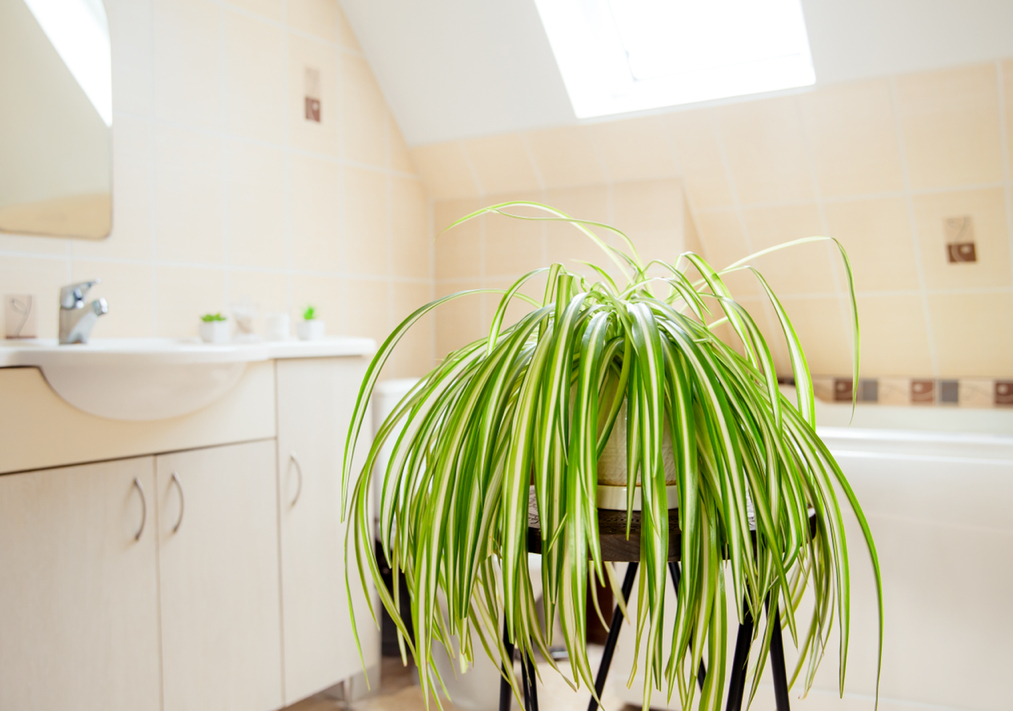
- BOTANICAL NAME: Chlorophytum comosum
- COMMON NAME(S): Spider Plant
- HARDINESS RATING: H2
- FLOWERING SEASON(S): Summer
- SUNLIGHT: Bright, indirect light
- WATERING: Once per week
The spider plant is the perfect choice for a family bathroom.
It’s happy in most conditions and will even self-propagate at will, with the tiny flowers it shoots forth in blooming season eventually dropping off and sprouting roots of their own.
It’s the opposite of claustrophobic, so plant it in a pot not much larger than its root ball for the best results.
24) String Of Turtles
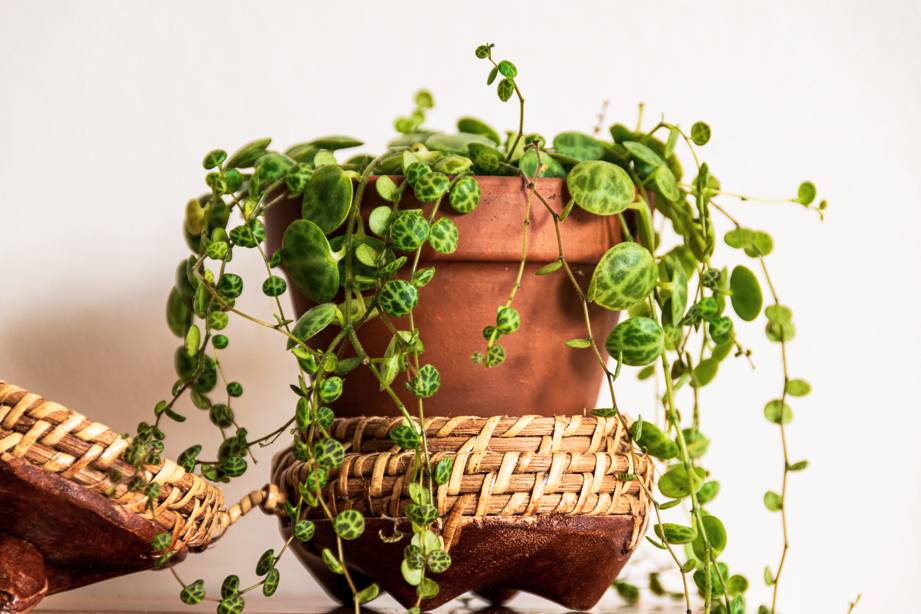
- BOTANICAL NAME: Peperomia prostrata
- COMMON NAME(S): String of Turtles
- HARDINESS RATING: H1B
- FLOWERING SEASON(S): Spring / Summer / Autumn
- SUNLIGHT: Bright indirect light
- WATERING: Every 2-3 weeks
Peperomia are delightful little trailing plants which boast turtle-shaped leaves in striped or variegated shades of yellow and green.
As such, they make an elegant addition to your bathroom when placed atop the toilet cistern or sink, especially since their diminutive dimensions won’t take up too much space.
25) ZZ Plant
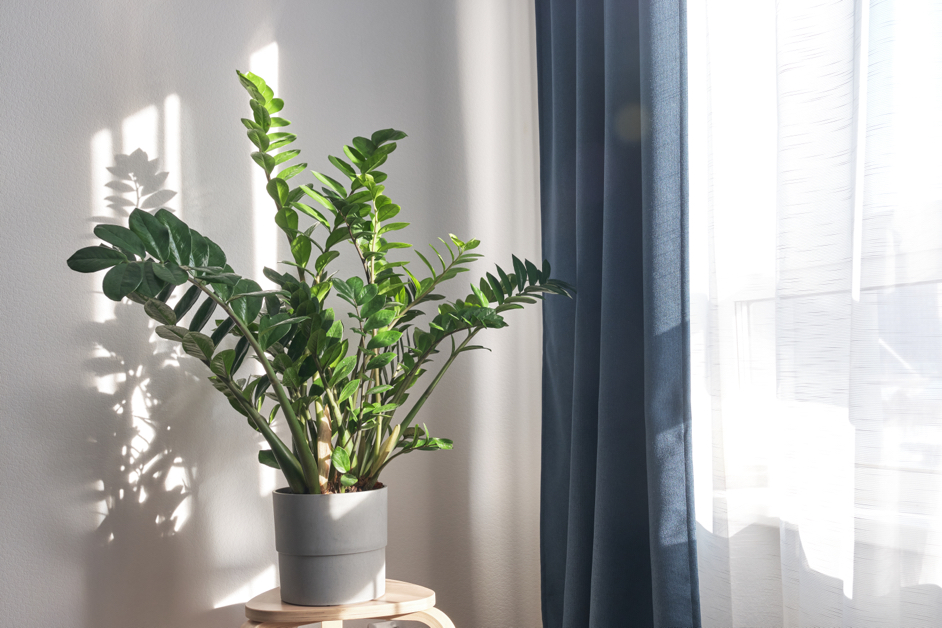
- BOTANICAL NAME: Zamioculcas zamiifolia
- COMMON NAME(S): ZZ / Fern Arum
- HARDINESS RATING: H1B
- FLOWERING SEASON(S): Summer
- SUNLIGHT: Low to bright indirect light
- WATERING: Every 2-3 weeks
Also known as the eternity plant, this tough customer is forgiving of even the most forgetful home horticulturalists.
It thrives in low-light conditions and will gobble up any moisture in the atmosphere, meaning it only ever requires watering if its soil is allowed to dry out completely.
References
- 1Saalau, E. (2014, February 14). Root Rots of Houseplants. Horticulture and Home Pest News. Retrieved May 2, 2023, from https://hortnews.extension.iastate.edu/2014/02-14/rootrot.html
- 2S. (n.d.-c). Bromeliads. Wisconsin Horticulture. Retrieved March 13, 2023, from https://hort.extension.wisc.edu/articles/bromeliads/
- 3Dracaena draco | dragon tree. (n.d.). Royal Horticultural Society. Retrieved March 13, 2023, from https://www.rhs.org.uk/plants/6092/i-dracaena-draco-i/details

